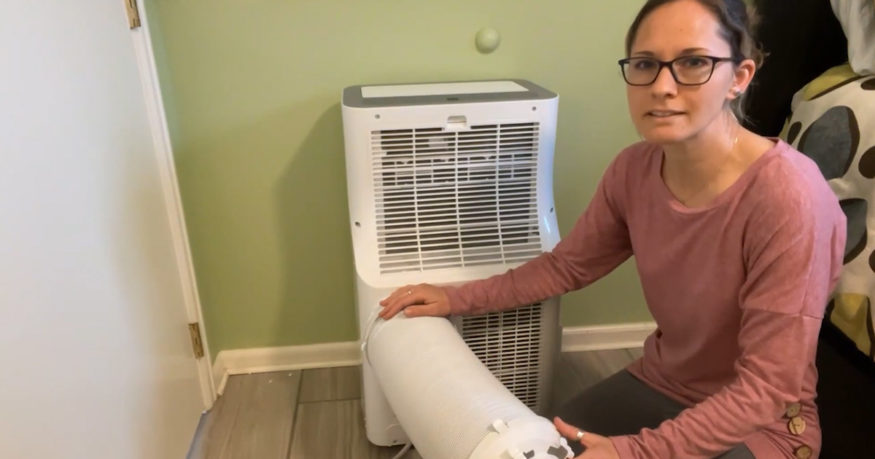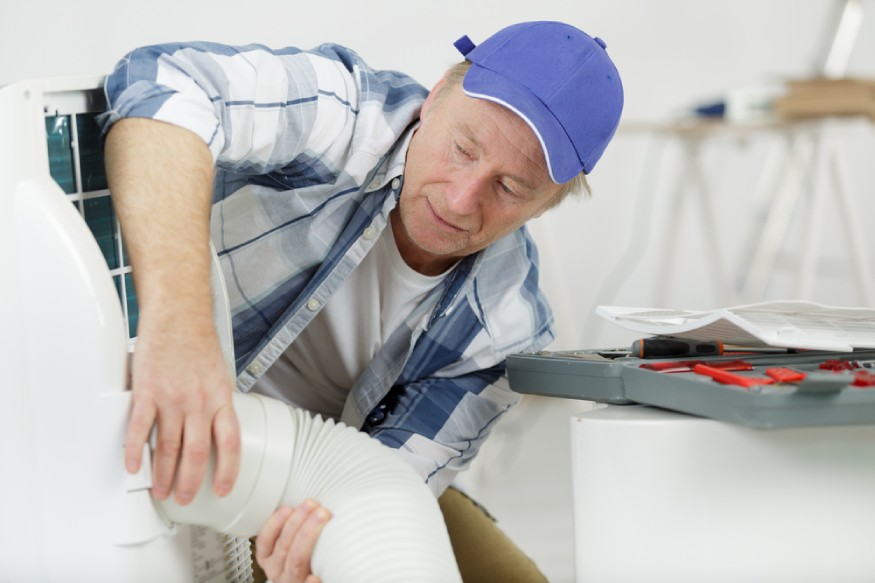If you’ve recently started shopping for a new portable AC, you’ve probably noticed that your options fall into two distinct categories: dual and single hose.
Across these two categories, many models share the same features and specifications, but that doesn’t mean there aren’t significant differences between ACs with two hoses and ACs with one. These models work differently and come with their own benefits and drawbacks that you need to consider.
To understand the differences between dual hose vs single hose portable air conditioners, keep reading. We’ll explain how each of these ACs works, their pros and cons, and give you our recommendations for the best product in each category.
Disclosure:It is important you understand that we may receive commissions when you click our links and make purchases. For more info see our disclosure statement.
Single Hose and Dual Hose AC Similarities
Before we get into the differences between these two types of portable ACs, it’s helpful to understand the similarities in how both types function.
All AC units work based on the same principles. The unit pulls the air over the evaporator coils where it is cooled, and then it pumps it back into the room. Simultaneously, air must be drawn into the unit to cool the hot condenser coils. As air passes over the condenser, it heats up and becomes more humid.
All portable AC units use a hose to vent this hot, moist air to the outside. What differs between a dual and single hose unit is where the unit gets the air to cool the condenser.
Single Hose Portable Air Conditioners
Single hose portable ACs have a single duct that runs from the unit to the window or exterior vent.
This type of portable AC is very common. They tend to be cheaper than dual hose options and are easier to install because they have fewer ducts. But, how they work leads to one major drawback.
How They Work
Single hose portable ACs have a single duct that is used to vent the hot, humid air created by the condenser to the outside. Since there is only one hose, these units must intake room air to cool the condenser.
And, because the evaporator has already cooled this room air, it is much colder than the condenser and, as such, pulls heat from it very effectively.
But stealing air from the room does create a problem. A negative pressure gradient is created as this air is pulled into the unit and then vented to the outdoors. In other words, the air pressure inside the room drops below the pressure outside the room.
This creates a draw that causes air from outside the room to move inside. Even if the door is closed, air will find its way in. Warm air from other areas of the house will push through cracks in the door, while hot air from outside moves in through gaps in the windows and around the venting duct.
This causes the AC unit to work harder to cool the new warm air flowing into the room.
Pros
- Requires less energy to cool the condenser.
- Simpler installation.
- Tend to be more affordable.
Cons
- Creates a negative pressure gradient that introduces warm air.
- Requires additional energy to cool introduced air.
- Hot air leaving through the exit duct radiates heat back into the room.
- Greater difference between the ASHRAE rating and SACC rating.
Dual Hose Portable Air Conditioners
Dual hose portable ACs have two ducts coming off the back leading to the outside.
Because of this, these models require a little more time and effort to install. They also tend to be more expensive than single-hose units. But the dual-hose effect does allow them to cool rooms more efficiently.
How They Work
The introduction of a second duct in dual hose units gives them the ability to use outside air to cool the condenser rather than pull air from the room.
Outside air is pulled through the intake hose, over the condenser, then expelled through the second hose back to the outside. This process allows these units to run without creating a negative pressure gradient, meaning it doesn’t actively pump warm air into the room during use.
But using outdoor air to cool the condenser does have its drawbacks. Most importantly, the air flowing over the condenser is warmer in these units. So, it takes more air and energy to cool the condenser than in a single-hose unit.
So, while these ACs work more efficiently because they cycle only cooled room air through the evaporator, they require more energy to cool the condenser. Depending on the design and quality of the unit, this push and pull of efficiency can negate any gains made by adding the second hose.
Note: It is also worth noting that many dual hose units do pull some room air over the condenser to help increase cooling efficiency. When this happens, you get many of the negatives of a dual hose unit and a negative pressure gradient. In most cases, models that work in this way are ones you want to avoid.
Pros
- Pressure remains relatively stable, so the warm air is not drawn into the room.
- Efficiently cools the air in the room
- Smaller difference between ASHRAE and SACC ratings
Cons
- Hot air in both the intake and exit duct radiates into the room
- More potential for air gaps due to the two hose design
- Requires more air (and energy) to cool the condenser
- Installation is more difficult.
- Tend to be more expensive.
Dual Hose vs Single Hose: Which Is Better?
There is a broad consensus on the internet that dual hose portable AC units are better than single. But this is very much a misconception.
Both units have areas of increased efficiency and areas of decreased efficiency. How the unit shakes out overall depends entirely on its specific design and build quality.
So, which type should you get? It all comes down to your budget and what’s available to you.
Today, all portable AC units carry a seasonally adjusted cooling capacity (SACC) rating. This rating is far more informative than the ASHRAE BTU ratings given by AC companies.
The SACC rating of a unit takes into account the energy used to cool the condenser to determine the overall BTU cooling capacity of the unit. This rating gives you, the consumer, the to accurately compare the overall performance of dual and single hose units.
Note: To get the most for your money, you should pick the unit with the highest SACC rating that you can afford. Whether that unit is dual or single hose is irrelevant.
For more information on the differences between these units and how they compare in terms of SACC ratings, check out the video below.
Choose the Right Portable AC for You
In the end, the argument of dual hose vs single hose portable air conditioners comes down to the specific models you’re looking at.
All single hose units are more energy efficient when it comes to cooling the condenser but less efficient at cooling the room due to the creation of negative air pressure gradients.
On the other hand, dual hose models are much more efficient at cooling the room but lose some efficiency in keeping the condenser cool.
For those with a midrange budget looking for the best portable AC, the hOmeLabs 1400 BTU Portable Air Conditioner is a great option. This single hose unit is highly efficient and comes with a ton of great features.
If you have a little more to spend, the Dreo TwinCool Inverter Portable Air Conditioner is worth considering. This dual hose unit features an efficient single outlet design and is highly functional and easy to use.
Still have questions about the differences between single and dual hose units? Ask us in the comments section below!



hi
is it necessary to install the intake hose? i have a vent for only 1 hose….